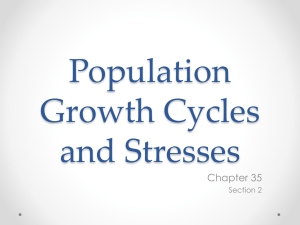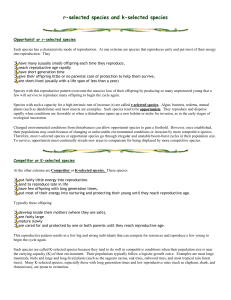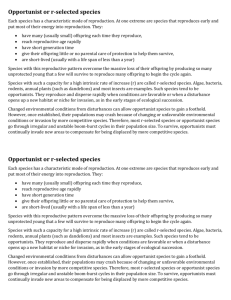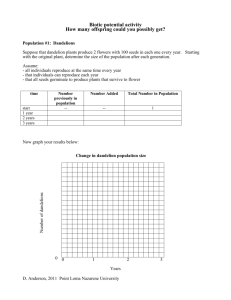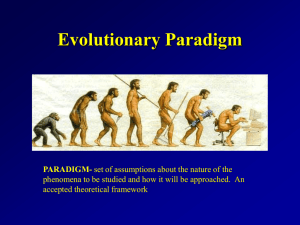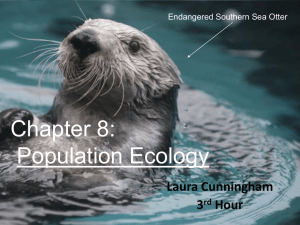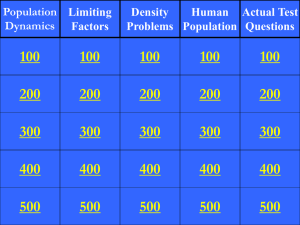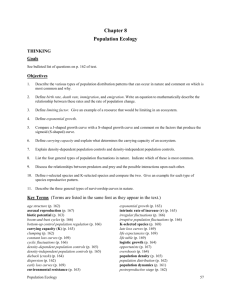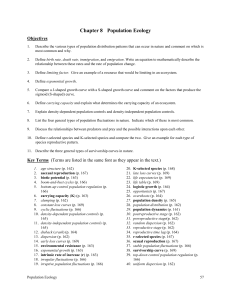r and K selected species
advertisement
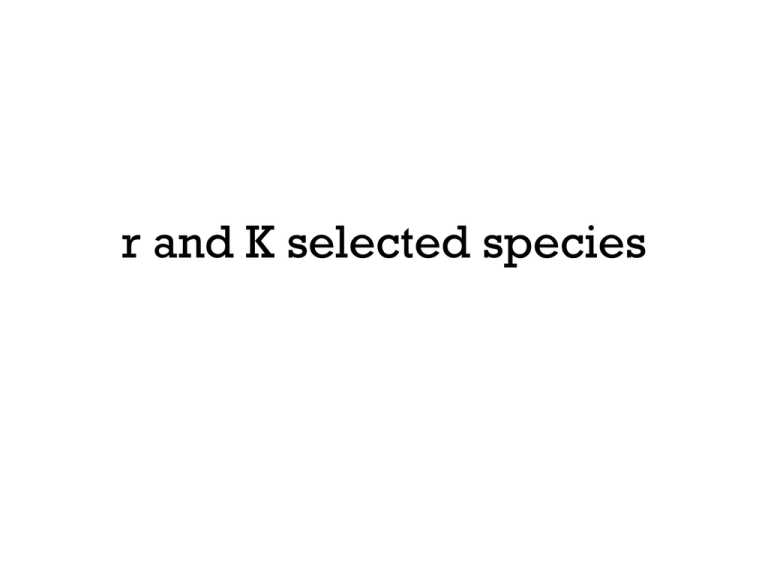
r and K selected species No Population Can Grow Indefinitely: J-Curves and S-Curves • Biotic potential – capacity for population growth under ideal conditions – Larger organisms tend to have low potential Population Growth • Exponential growth – population that increases at a fixed rate – J-Curve • Logistic growth – rapid exponential population growth followed by a steady decrease in population growth – S-Curve Population Growth J-Curves • Intrinsic rate of increase (r) – rate the population of a species would grow if it had unlimited resources J-Curves • Individuals in populations with high r – Reproduce early in life – Have short generation times – Can reproduce many times – Have many offspring each time they reproduce S-Curves • Environmental resistance – combination of all factors that act to limit the growth of a population • Carrying capacity (K) – maximum population of a given species that a habitat can sustain indefinitely without being degraded S-Curves Phases of Logistic Growth Curve 1. Lag Phase – little initial growth. 2. Rapid Growth Phase 3. Stable Phase – stabilizing factors limit growth Species Reproductive Patterns • r-Selected species, opportunists – species with a capacity for a high rate of population increase – Many small offspring – Little to no parental care or protection – Reproductive opportunists • K-selected species, competitors – reproduce later in life and have a small number of offspring with fairly long life spans – Few large offspring – High parental care Positions of r- and K-Selected Species on the SShaped Population Growth Curve Transitioning between J and S curves… • Carry capacity isn’t fixed – Varies depending on climate and season – Unpredictable changes can be devastating to the species AND the habitat • Reproductive time lag – period needed for the birth rate to fall and the death rate to rise in response to resource overconsumption – May lead to overshoot – Dieback (crash) r-Curve Fluctuations Types of Population Change • Stable – population fluctuates slightly above and below its carrying capacity – Characteristic of undisturbed rain forests – Late loss curve • Irruptive – short-lived rapidly reproducing species – Linked to seasonal changes in weather or nutrient availability – Algal Blooms – Early loss curves S-Curve Fluctuations Types of Population Change • Cyclic fluctuations, boom-and-bust cycles – Top-down population regulation • Controlled by predation – Bottom-up population regulation • Controlled by scarcity of one or more resources • Irregular – changes in population size with no recurring pattern – chaos Top-down Regulation Your Turn! • Make a K selected r selected continuum on your desk • Organize your cards ON YOUR OWN • Discuss with partner Survival Strategies • Which organisms were difficult to classify? Why? Survival Strategies • K selected • r selected • • • • • • Red-tailed hawk Coyote Western rattlesnake Roadrunner Kangaroo Mouse Whiptail lizard Your Turn! • Live for Today Life Table • Review: – What does late loss look like? – What does early loss look like? – What does constant-loss look like? • Remember to include a key (molting species)
